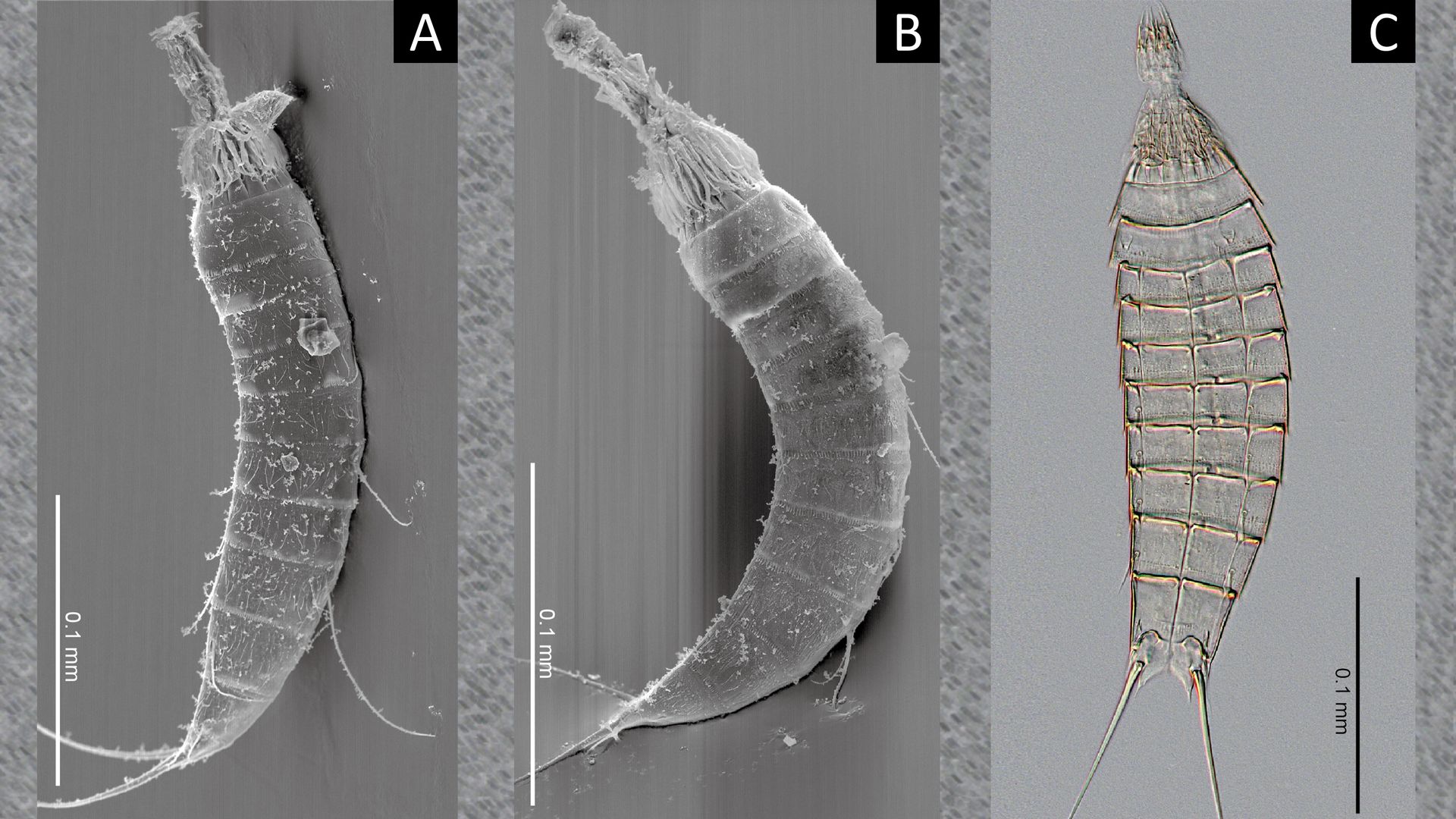研究成果 Research Results
- TOP
- News
- Research Results
- Three new species of mud dragons found in submarine cave in Okinawa, Japan
Three new species of mud dragons found in submarine cave in Okinawa, Japan
Discovery of the kinorhynchs reveals more of the hidden—but diverse—world of sand-dwelling microscopic animals 2020.07.21Research ResultsLife & Health

Three new species described in the study. A, Echinoderes gama Yamasaki, Fujimoto and Tanaka, 2020; B, Echinoderes kajiharai Yamasaki, Fujimoto and Tanaka, 2020; C, Echinoderes uozumii Yamasaki, Fujimoto and Tanaka, 2020.
Three new species described in the study. A, Echinoderes gama Yamasaki, Fujimoto and Tanaka, 2020; B, Echinoderes kajiharai Yamasaki, Fujimoto and Tanaka, 2020; C, Echinoderes uozumii Yamasaki, Fujimoto and Tanaka, 2020.
Researchers from Japan have reported the discovery of three new species of tiny dragon-like creatures in mud from a cave in Okinawa that has been submerged underwater for over 8,000 years.
The new species, described in the Journal of the Marine Biological Association of the United Kingdom, bring the total number of mud dragons from caves around the world to eleven and give a new peek into an area of biodiversity that is still far from fully explored.
Members of the phylum Kinorhyncha, mud dragons are microscopic marine invertebrates less than one millimeter in length inhabiting marine sediment across all climate zones and a wide range of depths. They have earned their nickname from their dragon-like appearance with spines on their bodies and a hard exoskeleton.
The three new species were collected on an expedition to the submarine cave Daidokutsu on the east coast of Iejima Island by Hiroshi Yamasaki, assistant professor of Kyushu University’s Faculty of Arts and Science, in collaboration with Shinta Fujimoto of Tohoku University and Hayato Tanaka of Tokyo Sea Life Park in April 2015.

Hiroshi Yamasaki (left) and Shinta Fujimoto off the coast of Iejima Island.
This is the second time that mud dragons have been found in this cave, and they represent 22nd, 23rd, and 24th kinorhynch species from Japanese waters.
The new species can be distinguished from all other known species in terms of their morphological features—such as patterns of spines, tubes, and gland cell outlets—and have been named as Echinoderes gama Yamasaki et al., 2020, Echinoderes kajiharai Yamasaki et al., 2020 and Echinoderes uozumii Yamasaki et al., 2020.
“While the sand and mud can appear to be void of life on first glance, they are actually teeming with a wide variety of interesting creatures,” says Yamasaki, the first author of the paper.
“There is a vast world of amazing microscopic animals everywhere in the world—not only in extreme environments, like the cave we explored this time, but also in places much closer to home, for example on beaches or ports. Many microscope animals are still waiting to be found there.”
###
For more information about this research, see “Three new meiobenthic species from a submarine cave in Japan: Echinoderes gama, E. kajiharai and E. uozumii (Kinorhyncha: Cyclorhagida),” Hiroshi Yamasaki, Shinta Fujimoto, Hayato Tanaka, Journal of the Marine Biological Association of the United Kingdom (2020), https://doi.org/10.1017/S0025315420000429
Research-related inquiries
Hiroshi Yamasaki, Assistant Professor
Faculty of Arts and Science
Contact information can also be found in the full release.
- TOP
- News
- Research Results
- Three new species of mud dragons found in submarine cave in Okinawa, Japan































